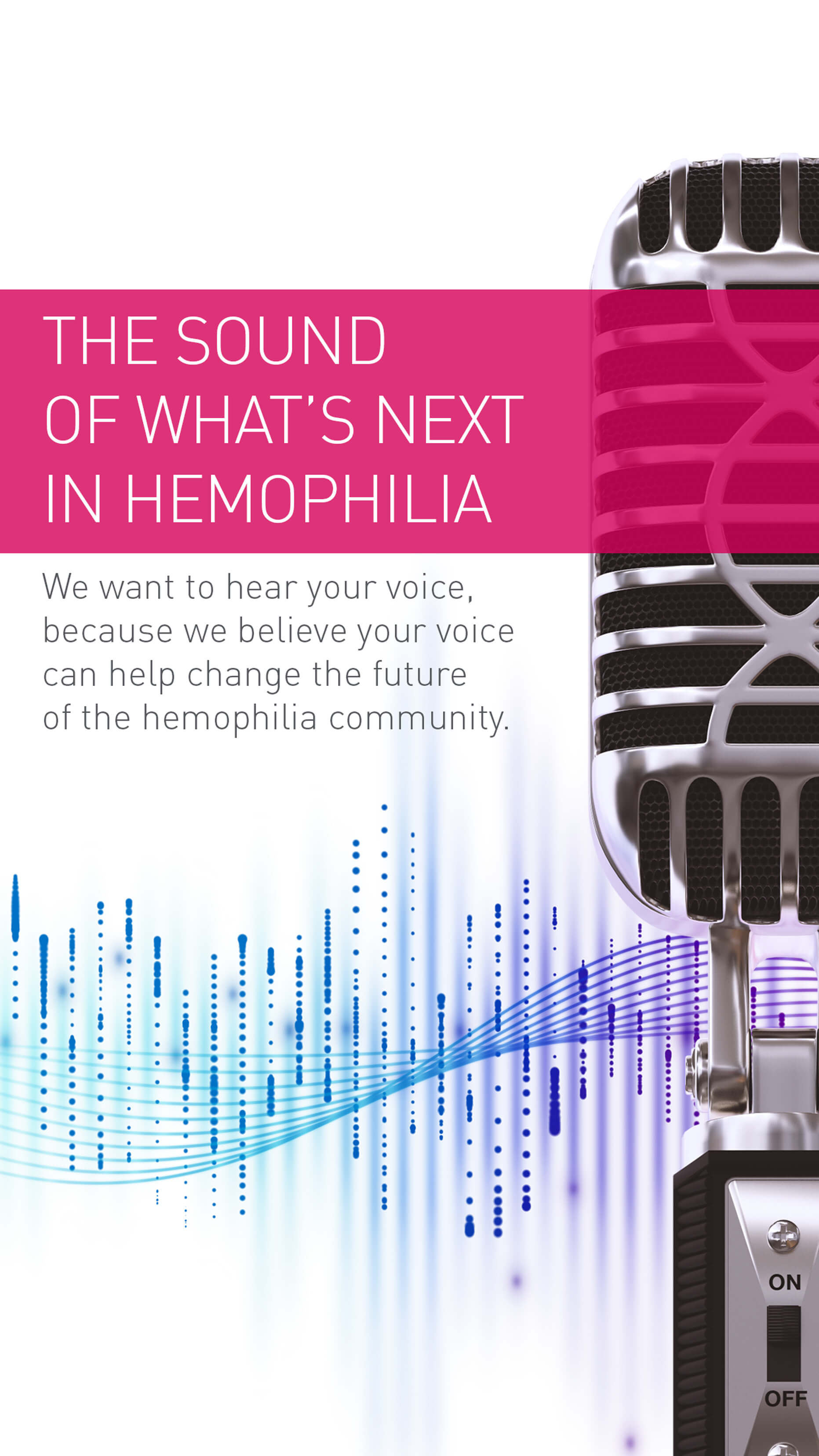


The Sound of What's Next in Hemophilia
You spoke, we listened. Hear the voices that are speaking out
for change in the hemophilia community.
Activate microphone
Maybe later
We are here to listen. You can navigate this site using the key words "Show me".
Try phrases like:
"Show me About BioMarin"
"Show me Meet the Team"

